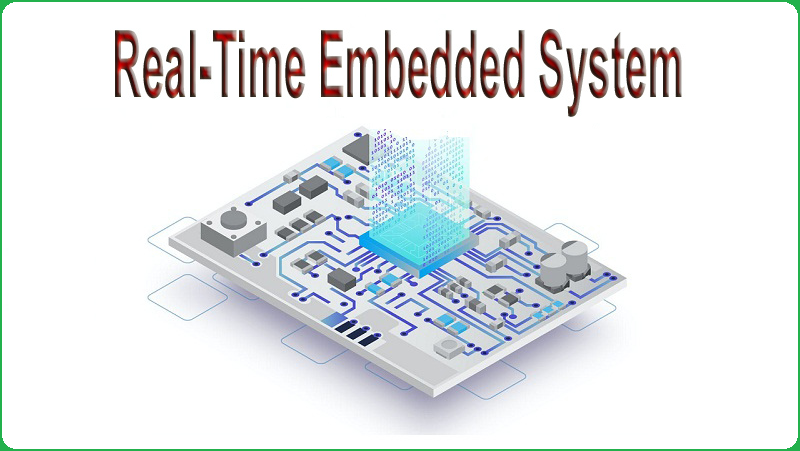What is Real Time Embedded System?
Definition: A real time embedded system is combination of both technologies of embedded systems and real-time computing. You also can say that it is a sub-domain of embedded systems.
Real-time Embedded Systems is using at such area where to need result at specific time period. So, this Real-time Embedded Systems use in military, medical and industrial sectors. If, their assigned tasks have to be done on it given proper time frame; otherwise they are deadline for their projects.

To control outer environment, to use the computer system and their connected several sensors or input/output interfaces. Here, you have right to schedule output with using of static or dynamic ways.
To design the Real-time Embedded Systems, we need timing analysis, multitasking design, debugging, and cross-platform testing and architecture design. To improve performance and avoid failures, excellent hardware get embed in these types of systems.
Examples of Real Time Embedded Systems
There are different types of real life examples of real time embedded system; below explain each one:
Medical Sector
- MRI (Magnetic resonance imaging)
- CT scanners
- Ultrasound scans
- Laboratory analytical equipments
- Radiation therapy
- Patient monitoring
- Defibrillation
Transportation Sector
- These embedded systems are using into modern vehicles (cars, trucks, ships, trains, planes) along with numerous sensors, GPS (Global Positioning System) trackers, Anti – lock Braking System or ABS and control systems as well as airbags.
- Traffic control for airspace, highways, railway tracks, and shipping lanes
Manufacturing Sector
- Real time embedded systems can also use into advance plants and factories like as robotics, AI systems and IoT devices perform various processes.
- Monitoring sensors control assembly-line operation
- Specific machinery working conditions like as temperature, humidity, pressure, vibration and other variables, predicting possible failures
Process Control
- Power plants
- Chemical plants
- Consumer products such as soft drinks and beer
Defense Sector
- Firing weapons
- Tracking
- Command and control
Advance houses and Cities
- Smart homes and cities are getting more popularity due to introduce of Internet of Things techniques and real-time embedded systems.
- Smart lighting, heating and air conditioning which people can manage through smart phone
- Smart parking, communication systems, digital signage with multimedia content, surveillance systems all utilize real-time embedded systems to function.
Applications of Real Time Embedded Systems
- Missile Guidance Systems
- Space Exploration (Rovers)
- Controlling of light, heat or elevators in smart building by mobile application
- Telephone and Radio communication
- Computer based games
- Pacemakers
- Multimedia systems that offer text, graphic, audio, and video interfaces
- Programmable logic controllers
Types of Real-Time Embedded Systems
There are two different types of real time embedded system; below explain each one:
Also Read: Advantages, Disadvantages, & Characteristics of Embedded System
- Soft Real Time Embedded Systems
- Hard Real time Embedded Systems
Soft Real Time Embedded Systems
In soft real time systems, to consider the processes like as main task, and control the entirely task. Deadlines are not allowed as a priority, if any case deadlines are omitted then omitting processes should not occur in the Soft Embedded Systems.
Examples of Soft Real Time Embedded Systems
- Personal computer
- Audio and video systems
- Set top boxes
- DVD Players
- Weather Monitoring Systems
Hard Real time Embedded Systems
In hard real time system, to consider timelines as a deadline, and it should not be omitting in any circumstances. Hard Embedded Systems does not use any types of permanent memory, so their processes must be complete properly in the first time itself.
Hard Real Time System must generate accurate responses to the events within specified time period.
Examples of Hard Real Time Embedded Systems
- Flight Control Systems
- Missile Guidance Systems
- Weapons Defense System



